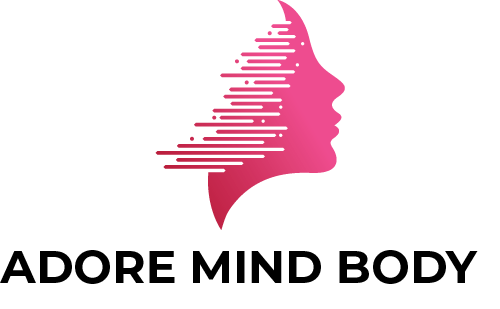Ditch the fad diets and endless crunches. This ultimate guide to belly fat loss unveils the science-backed secrets to achieving a flatter stomach and a healthier you. We’ll delve into the different types of belly fat, explore effective diet and exercise strategies, and uncover lifestyle habits that can transform your midsection. Get ready to discover sustainable solutions that will have you feeling confident and empowered on your belly fat-burning journey.
Understanding Belly Fat and Strategies for Loss
I. Belly Fat: An Overview
A. Definition of Belly Fat:
Belly fat, also known as abdominal fat or central obesity, refers to excess fat accumulation around the midsection. This fat can be located directly under the skin (subcutaneous fat) or deeper within the abdominal cavity surrounding your organs (visceral fat).
B. Types of Belly Fat:
There are two main types of belly fat, each with different health implications:
- 1. Subcutaneous Fat: This is the fat you can pinch beneath your skin. While not ideal aesthetically, subcutaneous fat plays a role in cushioning organs and regulating body temperature.
- 2. Visceral Fat (Health Risks): Visceral fat, also known as deep belly fat or organ fat, is located deeper in the abdomen and wraps around vital organs like the liver, intestines, and pancreas. This type of fat is more metabolically active and releases hormones that can disrupt your body’s chemistry. High levels of visceral fat are linked to increased risk of:
- Heart disease
- Type 2 diabetes
- Stroke
- Certain cancers
- Metabolic syndrome (combination of risk factors including high blood pressure, high blood sugar, and unhealthy cholesterol levels)
C. Why Does Belly Fat Accumulate?
Several factors contribute to belly fat accumulation:
- 1. Genetics: Your genes can influence how your body stores fat and where it tends to accumulate.
- 2. Diet and Calorie Intake: Consuming excess calories, especially from sugary drinks, refined carbohydrates, and unhealthy fats, can lead to belly fat gain.
- 3. Lack of Exercise: Regular physical activity helps burn calories and reduces overall fat storage, including belly fat.
- 4. Stress: Chronic stress can elevate cortisol levels, a hormone that promotes fat storage, particularly around the abdomen.
- 5. Sleep Deprivation: Poor sleep can disrupt hormones that regulate hunger and satiety, leading to increased calorie intake and potential belly fat gain.
II. Diet and Nutrition for Belly Fat Loss
A. Calorie Deficit: The Key to Burning Fat
The fundamental principle for losing belly fat, or any fat for that matter, is creating a calorie deficit. This means burning more calories than you consume. Your body will then tap into stored fat reserves for energy, leading to weight and belly fat reduction.
B. Macronutrients and Belly Fat Loss:
Macronutrients (protein, carbohydrates, and fat) play a significant role in your diet’s impact on belly fat. Here’s a breakdown of their influence:
- 1. Protein: Importance for Satiety and Muscle Building
- Protein is highly satiating, meaning it helps you feel fuller for longer, potentially reducing calorie intake and aiding belly fat loss.
- Building muscle mass through protein intake also boosts your metabolism, helping you burn more calories at rest, which can contribute to belly fat reduction.
- 2. Carbohydrates: Choosing the Right Types
- Not all carbs are created equal. Simple carbohydrates found in sugary drinks, refined grains, and pastries cause blood sugar spikes and crashes, leading to increased hunger and potential overeating.
- Choose complex carbohydrates instead. These include whole grains, fruits, and vegetables. They provide sustained energy, fiber for gut health, and keep you feeling fuller for longer, promoting belly fat loss.
- a. Simple vs. Complex Carbs:
- Simple carbs: Sugary drinks, white bread, pastries, candy
- Complex carbs: Whole grains (brown rice, quinoa), fruits, vegetables
- b. Fiber’s Role in Fat Loss: Fiber is a type of carbohydrate found in plant-based foods. It promotes satiety, regulates digestion, and helps manage blood sugar levels, all of which contribute to belly fat loss efforts.
- 3. Healthy Fats: Don’t Fear Them!
- Including healthy fats in your diet is crucial for overall health and doesn’t hinder belly fat loss.
- Monounsaturated and polyunsaturated fats help reduce inflammation, promote satiety, and improve heart health.
- a. Monounsaturated and Polyunsaturated Fats: Sources include avocado, olive oil, nuts, seeds, fatty fish
- b. Examples of Healthy Fat Sources:
- Avocados
- Extra virgin olive oil
- Nuts and seeds (almonds, walnuts, chia seeds)
- Fatty fish (salmon, tuna)
C. Sample Meal Plan for Belly Fat Loss (1 Day):
Here’s a sample meal plan demonstrating how to incorporate these dietary principles for belly fat loss:
- Breakfast: Greek yogurt with berries and chia seeds (protein, complex carbs, fiber)
- Lunch: Grilled chicken breast with brown rice and roasted vegetables (protein, complex carbs, healthy fats)
- Snack: Apple with almond butter (complex carbs, healthy fats)
- Dinner: Salmon with quinoa and steamed broccoli (protein, complex carbs, healthy fats)
Remember: This is just a sample. You can create a personalized meal plan based on your preferences and calorie needs.
III. Exercise and Activity for Belly Fat Reduction
A. Cardio: Burning Calories and Overall Fat Loss
Cardio, or aerobic exercise, plays a vital role in belly fat reduction. Here’s how:
- 1. Benefits of Cardio for Belly Fat:
- Burns significant calories during the exercise session.
- Improves insulin sensitivity, aiding in blood sugar management, which can indirectly help with belly fat loss.
- Can contribute to overall fat reduction, including belly fat.
- 2. Choosing the Right Cardio Activities:
- There are various cardio options to suit your preferences: brisk walking, running, swimming, cycling, dancing.
- Aim for at least 150 minutes of moderate-intensity cardio or 75 minutes of vigorous-intensity cardio per week.
- 3. HIIT (High-Intensity Interval Training) for Faster Fat Burning:
- HIIT involves alternating between short bursts of intense exercise and periods of recovery.
- Studies suggest HIIT may be more effective for belly fat reduction compared to steady-state cardio due to its ability to burn more calories in a shorter time and elevate your metabolic rate post-workout (EPOC).
B. Strength Training: Building Muscle and Boosting Metabolism
Strength training is often overlooked for belly fat loss, but it offers significant benefits:
- 1. How Muscle Helps Reduce Belly Fat: Muscle tissue burns more calories at rest than fat tissue. Building muscle mass through strength training increases your metabolism, helping you burn more calories throughout the day, which can contribute to belly fat reduction.
- 2. Strength Training Exercises for Belly Fat Loss:
- Focus on compound exercises that target multiple muscle groups at once, maximizing calorie burn. Examples include squats, lunges, push-ups, rows, deadlifts.
- Don’t neglect your core muscles. Exercises like planks, Russian twists, and crunches can strengthen your core, which improves posture and stability and can indirectly contribute to a flatter stomach appearance.
- 3. Sample Strength Training Routine for Beginners:
- Day 1: Lower Body (squats, lunges, deadlifts)
- Day 2: Upper Body (push-ups, rows, overhead press)
- Day 3: Rest or Active Recovery (light cardio, yoga)
- Day 4: Core (planks, Russian twists, crunches)
C. Importance of NEAT (Non-Exercise Activity Thermogenesis)
Beyond structured exercise, NEAT (Non-Exercise Activity Thermogenesis) refers to the calories you burn throughout the day through everyday activities. Here’s how to increase NEAT for belly fat loss:
- 1. Increasing Daily Movement for More Calorie Burn:
- Take the stairs instead of the elevator.
- Park further away and walk to your destination.
- Do some stretches or light housework during commercial breaks while watching TV.
- Use a standing desk if possible.
By combining cardio, strength training, and increased NEAT, you can significantly boost your calorie expenditure and promote belly fat reduction.
IV. Lifestyle Strategies for Shedding Belly Fat
A healthy lifestyle goes beyond just diet and exercise. Here are some additional strategies to support your belly fat loss journey:
- A. Getting Enough Sleep (Importance for Hormone Regulation): Aim for 7-8 hours of quality sleep per night. Sleep deprivation disrupts hormones like leptin (promotes satiety) and ghrelin (increases hunger), leading to increased calorie intake and potential belly fat gain.
- B. Stress Management Techniques (Mindfulness, Meditation): Chronic stress elevates cortisol levels, a hormone that promotes fat storage, particularly around the abdomen. Practice relaxation techniques like mindfulness meditation or deep breathing to manage stress and potentially reduce belly fat.
- C. Drinking Plenty of Water: Water keeps you hydrated, improves digestion, and may help you feel fuller, potentially reducing calorie intake and aiding belly fat loss.
- D. Limiting Alcohol Consumption: Alcohol contains calories and can hinder your fat-burning efforts. Moderating alcohol intake can benefit your overall health and belly fat reduction goals.
Remember, consistency is key. By incorporating these lifestyle changes into your routine, you can create a sustainable approach to belly fat loss and improve your overall well-being.
V. Creating a Sustainable Belly Fat Loss Plan
Creating a sustainable belly fat loss plan goes beyond just quick fixes. Here are key strategies for long-term success:
- A. Setting Realistic and Measurable Goals: Don’t aim for drastic weight loss overnight. Set realistic goals, like losing 1-2 pounds per week. Track your progress (weight, measurements) to stay motivated and adjust your plan as needed.
- B. Finding an Exercise Routine You Enjoy: Choose activities you actually enjoy. This increases the likelihood you’ll stick with your exercise program in the long run. Explore different options like dancing, team sports, or group fitness classes to find your fit.
- C. Planning Healthy Meals You Can Stick With: Don’t deprive yourself entirely. Focus on creating healthy meal plans you can realistically maintain. Allow for occasional treats while prioritizing nutritious choices most of the time.
- D. Importance of Consistency: Consistency is crucial for long-term belly fat loss. Aim for progress, not perfection. There will be setbacks, but sticking with your plan most of the time will lead to results.
VI. Sample Belly Fat Loss Workouts
Here are three sample workouts targeting belly fat loss at different fitness levels:
A. Beginner HIIT Cardio Workout:
- Warm-up (5 minutes): Light cardio (jogging, jumping jacks)
- Interval Training (repeat circuit 3 times):
- 30 seconds high knees
- 30 seconds jumping jacks
- 30 seconds rest
- Cool-down (5 minutes): Stretching
B. Intermediate Strength Training Routine for Belly Fat:
- Squats (3 sets of 10-12 repetitions)
- Lunges (3 sets of 10-12 repetitions per leg)
- Push-ups (modified on knees if needed, 3 sets of as many repetitions as possible)
- Plank (3 sets of 30-60 seconds hold)
- Russian twists (3 sets of 15-20 repetitions per side)
C. Advanced Full-Body Circuit Training:
- Burpees (3 sets of 10-12 repetitions)
- Pull-ups (assisted if needed, 3 sets of as many repetitions as possible)
- Overhead press with dumbbells (3 sets of 10-12 repetitions)
- Romanian Deadlifts (3 sets of 10-12 repetitions)
- Ab wheel rollout (3 sets of as many repetitions as possible)
These are just examples. You can modify exercises or intensity based on your fitness level and consult a certified trainer for personalized guidance.
VII. FAQs: Your Belly Fat Loss Questions Answered
A. Can I Lose Belly Fat Without Exercise?
While some belly fat loss may be possible through diet alone, exercise plays a crucial role in optimizing results. Exercise helps you burn more calories and build muscle mass, which boosts your metabolism and promotes overall fat loss, including belly fat.
B. What are Some Belly Fat Loss Supplements? (Disclaimer: Consult a doctor before starting supplements)
Several supplements are marketed for belly fat loss, but the evidence is often limited. Some potentially beneficial options include:
- Custom Keto Diet
- Green tea extract: May boost metabolism slightly.
- Conjugated linoleic acid (CLA): Limited research suggests it might aid in fat loss.
- Glucomannan: A fiber that can promote satiety.
Always consult your doctor before starting any supplements, especially if you have any underlying health conditions.
C. How Long Does it Take to Lose Belly Fat?
The timeframe for belly fat loss varies depending on factors like starting weight, diet, exercise routine, and genetics. A realistic goal is to lose 1-2 pounds per week. Consistency is key, and with dedication, you can see noticeable results within a few weeks to a few weeks to a few months.
D. Spot Reduction: Is it a Myth?
Unfortunately, spot reduction (losing fat in a specific area) is generally not possible. Exercise helps you burn calories overall, and your body determines where fat is lost from. However, focusing on core strengthening exercises can help tone and tighten your abdominal muscles, potentially leading to a flatter stomach appearance.
E. Is Surgery an Option for Belly Fat Removal? (Disclaimer: Consult a doctor about surgical options)
Liposuction is a surgical procedure that removes fat deposits. It can be an option for some individuals, but it’s not a weight-loss solution and carries potential risks. Consult a qualified healthcare professional to discuss if liposuction might be right for you.
F. I have a desk job. How can I increase my daily activity?
Here are some tips for incorporating more movement into your workday:
- Set a timer to remind yourself to get up and move around every 30 minutes. Do some stretches, walk around the office, or take the stairs for a few flights.
- Invest in a standing desk if possible. Standing burns slightly more calories than sitting.
- Consider using an exercise ball instead of a chair for short periods.
G. I’m always bloated. Could that be belly fat?
Bloating can be caused by various factors like food intolerances, digestive issues, or excessive gas. If you experience frequent bloating, consult a doctor to rule out any underlying conditions.
H. What are some healthy and delicious belly fat-burning snacks?
Here are some snack ideas that are both satisfying and belly fat-friendly:
- Fruits and vegetables with a dollop of nut butter
- Greek yogurt with berries and chia seeds
- Hard-boiled eggs
- Edamame pods
- Handful of nuts and seeds
- Carrot sticks with hummus
I. I don’t like cooking much. How can I eat healthy for belly fat loss?
There are plenty of healthy, convenient options available:
- Pre-cut vegetables and fruits
- Pre-cooked grilled chicken or fish
- Frozen healthy meals (check labels for added sugar and sodium)
- Meal delivery services focused on healthy options
J. What if I fall off track with my diet or exercise routine?
Don’t beat yourself up! It happens to everyone. The key is to get back on track as soon as possible. One slip-up doesn’t derail your progress. Focus on making healthy choices most of the time, and you’ll be on your way to achieving your belly fat loss goals.
By addressing these common concerns and providing practical solutions, you can empower readers to feel confident and prepared on their belly fat loss journey.
LSI & NLP Keywords:
- abdominal fat, visceral obesity, central obesity, belly pooch, spare tire, love handles, waist circumference, healthy weight loss, body composition, metabolic health, insulin sensitivity, belly fat burning foods, fat-burning exercises, core strengthening, healthy lifestyle habits, stress management for weight loss, sleep hygiene for weight loss, bodyweight exercises, resistance training, weight training, mindful eating, portion control, macronutrient balance, high-protein diet, low-carb diet, sugar reduction, processed food elimination






